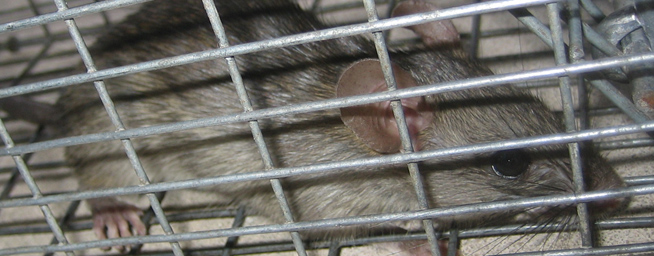When looking at trapping a rat or rats, there are certain pieces of equipment you will need, and a few you definitely won't. If you're looking at using poison, don't bother. This will prove to be not only a waste of your time, but ineffective and dangerous too. It will affect the local wildlife, even the animals you don't want to kill, and it can also kill or harm neighborhood pets too. That's before you even begin to think about what it will do to the rats and mice themselves. For the most part, the rat or mouse will crawl back to a cozy spot after it has consumed the poison, if it even bothers going anywhere near it at all, and then it will die. It won't be a quick death, it will be a long and painful one, and then you'll be left with a dead rat or mouse that is decomposing and creating quite the smell, somewhere in your home. The only way to get rid of that smell is to then find the dead animal, and that, in itself, can be an impossible task.

Go back to the Rats in the Attic home page.

If you're reading this, it's safe to assume that you have some level of a rat infestation. It can be an unpleasant shock to know that your home is being contaminated by rodents. Before you set to work tackling the infestation, it's important to know what gear you will need to maximize your success, and how to use it.
Traps
Obviously, you're going to need a trap. However, you will need to decide whether or not you're going to approach this humanely. Snap traps are designed to kill the rodents quickly, but there is also an abundance of live traps available that simply confine the rat ready for relocation. With live traps, make sure that you check on the trap regularly to ensure that any caught animals don't then die of starvation or dehydration.
For bait, there are many options to choose from. Before you get started, it's a good idea to figure out what kind of rat you're dealing with. Different rats have different diets; some are vegetarian and some will happily eat meat. Knowing what you're catering to means you'll spend less time in the trial-and-error phase. Be patient when baiting a rat, they are naturally cautious animals. It may take days or perhaps weeks for them to become familiar with the trap and explore it.
Protective Clothing
When dealing with an infestation it's important to wear protective clothing. Most importantly of these are gloves and a face mask. Not only does it shield you from any potential pathogens from the rats or their droppings, but wearing gloves also helps to keep your scent off the trap when you first lay it. If a trap smells strongly of humans, chances are rats won't fall for it. Rats are smarter than many people give them credit for.
Vacuum Cleaner
If you're dealing with a more extensive infestation such as nesting rats in an attic, there will be droppings. There will also be shredded soft and hard materials that the rats have used for nesting and grinding their teeth down. You'll want to come into contact with as little of this as possible, and a vacuum cleaner is a good option for quick and clean removal.
Aftercare
If you plan to go down the lethal trap route, it is your responsibility to dispose of the carcass in a safe manner. You must not simply discard it outside, as it can spread disease. Use a disposable container or double bag your trash bag before discarding it properly. Once the infestation is no longer active, use anti-bacterial disinfectant to clean any part of the house that the rat may have come into contact with. Put particular emphasis on areas involved with food or near sleeping quarters.








